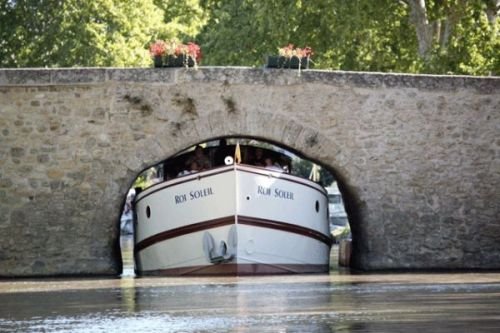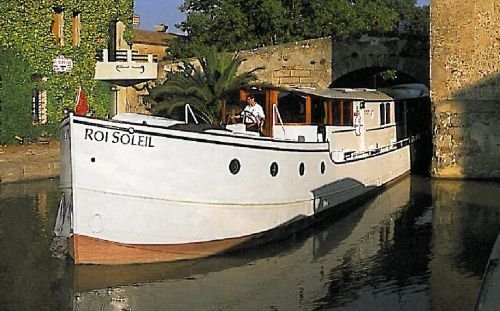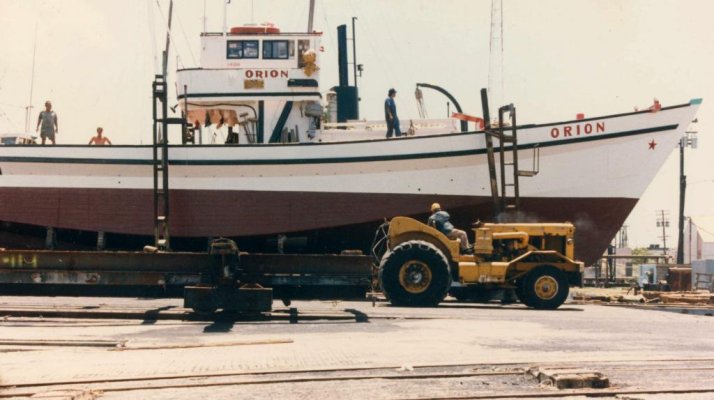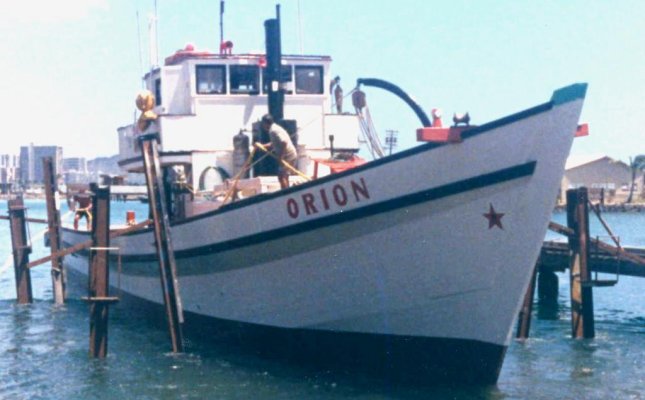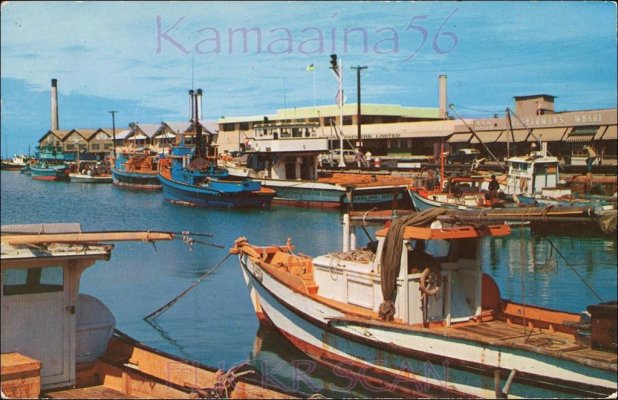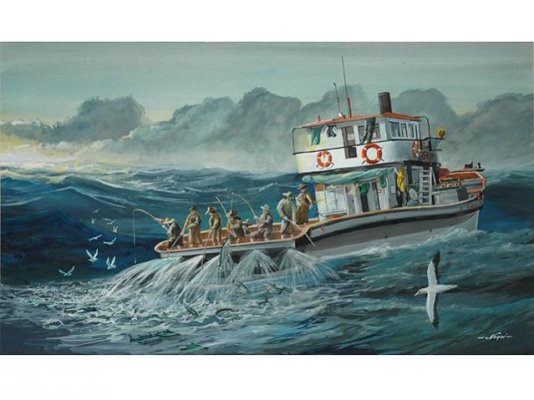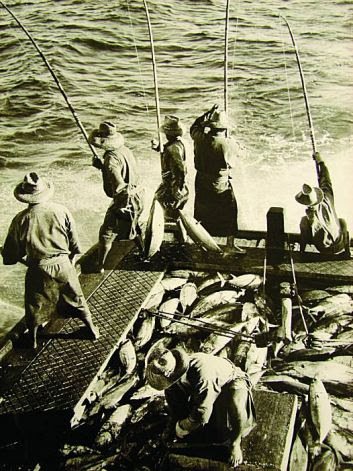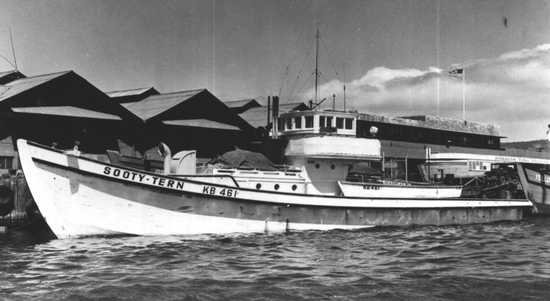You are using an out of date browser. It may not display this or other websites correctly.
You should upgrade or use an alternative browser.
You should upgrade or use an alternative browser.
Interesting boats
- Thread starter Steve
- Start date
The friendliest place on the web for anyone who enjoys boating.
If you have answers, please help by responding to the unanswered posts.
If you have answers, please help by responding to the unanswered posts.
CPseudonym
Moderator Emeritus
Looks interesting to me. I kind of like it.
brian eiland
Guru
- Joined
- Jul 17, 2013
- Messages
- 930
- Location
- USA & Thailand
- Vessel Name
- RunningTide
- Vessel Make
- 37 Louisiane catamaran
looks like a Canal Boat....
...about time America
...about time America
Pilot station would drive me nuts... Can't at all see bow. But, basic design would make good boat for sloughs in SF Delta. House boats accomplish same thing and have pilot station up front or on top in a flying bridge.
N4712
Guru
- Joined
- Apr 22, 2013
- Messages
- 3,607
- Location
- U.S.A
- Vessel Name
- Oliver
- Vessel Make
- Nordhavn 47 Hull# 12
Pilot station would drive me nuts... Can't at all see bow. But, basic design would make good boat for sloughs in SF Delta. House boats accomplish same thing and have pilot station up front or on top in a flying bridge.
Art, in the last pic if you look through the window you'll see a helm.
Art, in the last pic if you look through the window you'll see a helm.
By Golly - You're correct!

markpierce
Master and Commander
- Joined
- Sep 25, 2010
- Messages
- 12,557
- Location
- USA
- Vessel Name
- Carquinez Coot
- Vessel Make
- penultimate Seahorse Marine Coot hull #6
looks like a Canal Boat....
...about time America
Flying bridges (and masts) have no place on canals with low bridges.
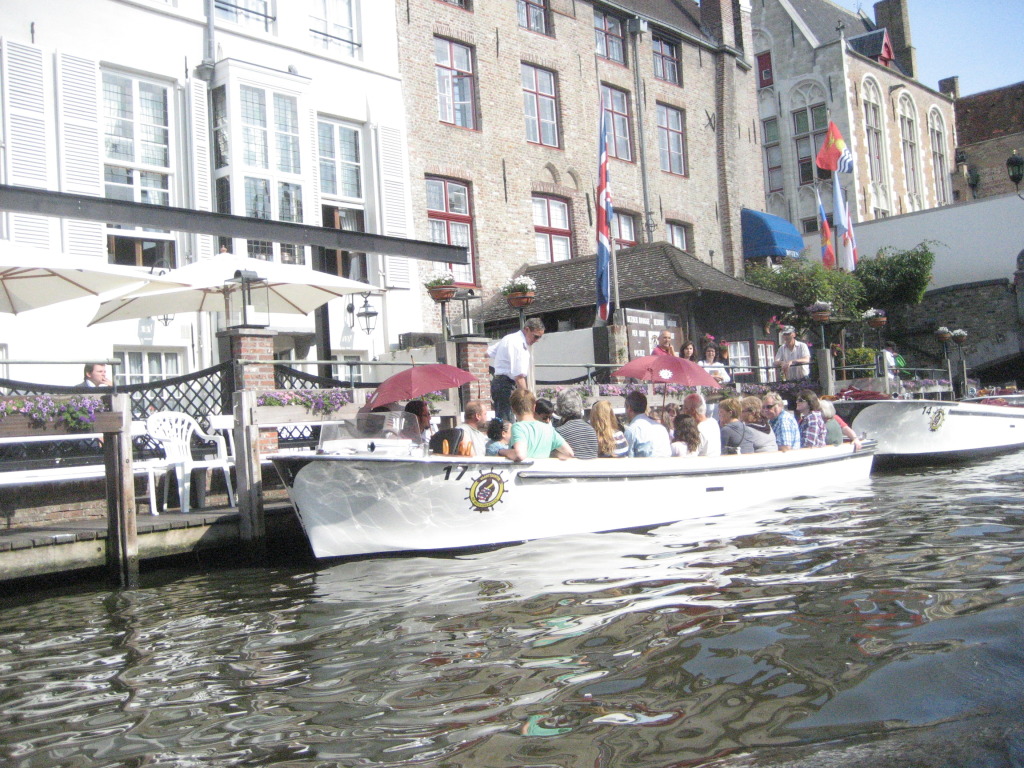
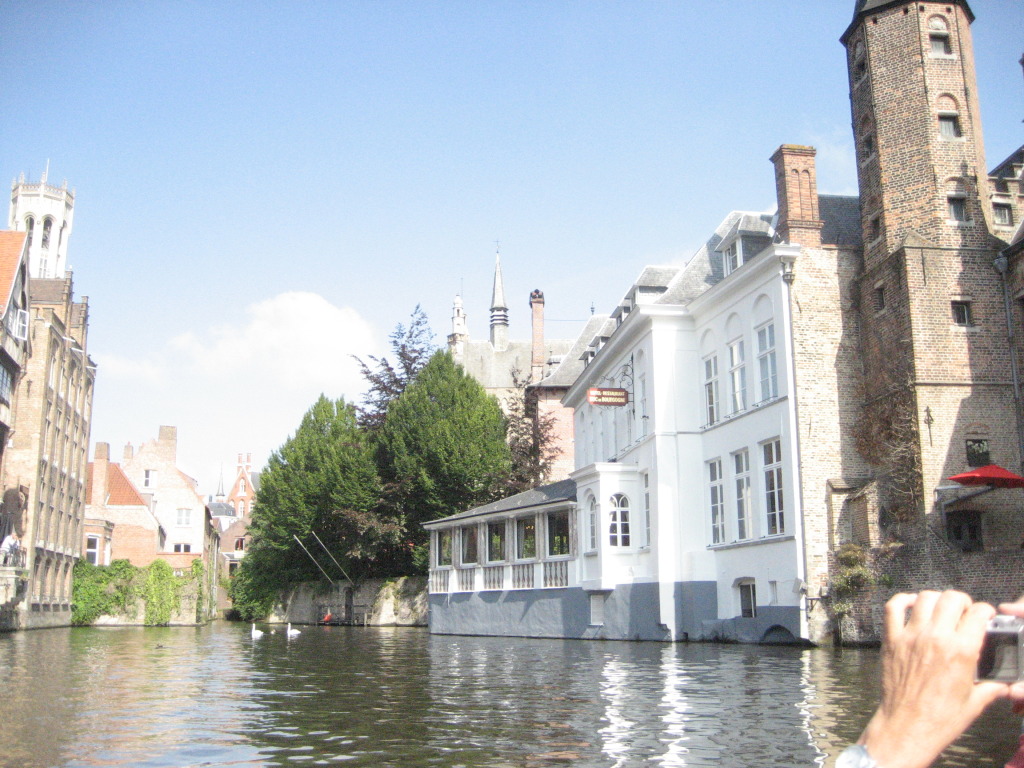
(Bruges)
Last edited:
denloe1
Veteran Member
- Joined
- Sep 14, 2013
- Messages
- 96
- Location
- United States
- Vessel Name
- Angelique
- Vessel Make
- Hatteras 80' CPMY
At Markpierce. That one sunk at Mare Island is a 63' AVR, or what is left of her. After their Navy crash boat service, They trained many Sea Scouts on the bay and delta including me. Got me hooked on wood boats and the Navy ?
This baby is not only interesting and cool too... she is top of the breed as a fisher-person's dream! Won't last long at that price, in her condition. Don move fast - if you'd like to relive your fisher daze!!
Bertram Flybridge Cruiser! - $14995 (Sacramento
Bertram Flybridge Cruiser!
http://images.craigslist.org/00k0k_6Kx8B5xLoUP_600x450.jpg
Bertram Flybridge Cruiser! - $14995 (Sacramento
Bertram Flybridge Cruiser!
http://images.craigslist.org/00k0k_6Kx8B5xLoUP_600x450.jpg
brian eiland
Guru
- Joined
- Jul 17, 2013
- Messages
- 930
- Location
- USA & Thailand
- Vessel Name
- RunningTide
- Vessel Make
- 37 Louisiane catamaran
healhustler
Guru
- Joined
- Oct 2, 2009
- Messages
- 5,198
- Location
- USA
- Vessel Name
- Bucky
- Vessel Make
- Krogen Manatee 36 North Sea
Neat boat, Art. 26' with a fly......fun!
brian eiland
Guru
- Joined
- Jul 17, 2013
- Messages
- 930
- Location
- USA & Thailand
- Vessel Name
- RunningTide
- Vessel Make
- 37 Louisiane catamaran
markpierce
Master and Commander
- Joined
- Sep 25, 2010
- Messages
- 12,557
- Location
- USA
- Vessel Name
- Carquinez Coot
- Vessel Make
- penultimate Seahorse Marine Coot hull #6
At Markpierce. That one sunk at Mare Island is a 63' AVR, or what is left of her. After their Navy crash boat service, They trained many Sea Scouts on the bay and delta including me. Got me hooked on wood boats and the Navy ?
ben2go
Guru
I believe that boat is a modified version of Bateau GT27 Cruiser.
Boat plan details, GT Cruiser 27 (GT27), Houseboats
Boat plan details, GT Cruiser 27 (GT27), Houseboats
Saw this at the show. Not sure I like it, but it is kinda different/interesting. Plywood construction. KJ
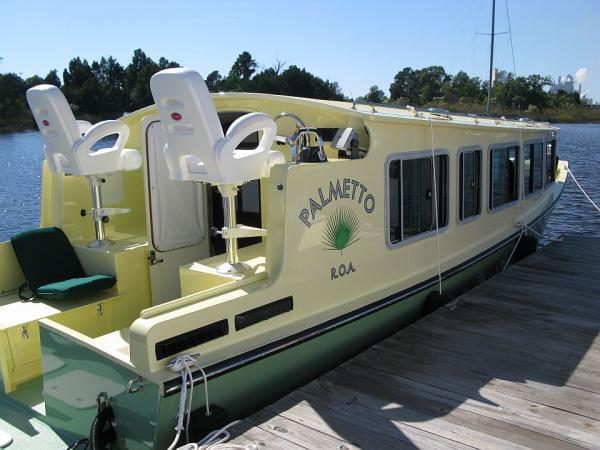
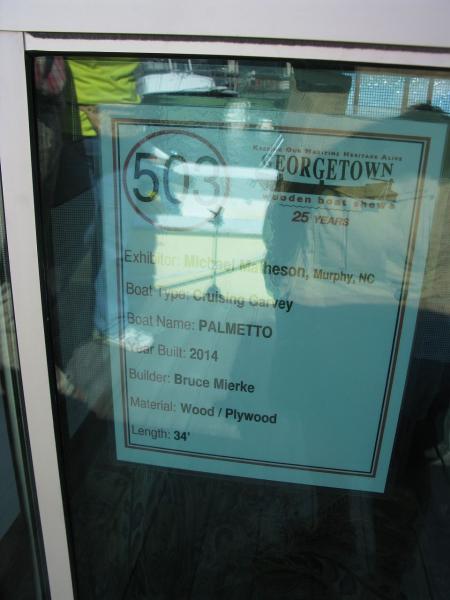

That photo was taken about three years ago in Belgium!
It's possible he was referring to the vessel pictured in your post #13 in this thread.....
I've posted these two shots before, but I don't think in this thread about "interesting" boats.
If I had to name my all-time favorite boat type, I suspect this would be it. Commonly referred to in Hawaii as sampans or aku boats, a fair number of them were built locally, all to this basic configuration, in the years after WWII. They were the standard commercial tuna boat in Hawaii up through the 1970s.
About 80 feet long (I'm guessing) and quite narrow, all of them were wood, carvel-planked (hence the name sampan which I believe means carvel planking in Japanese), single engine. Most if not all of them were powered with a 6-71.
They were day boats, going over to Pearl Harbor in the early morning (the number on the side of the pilothouse is the Pearl Harbor permit number) where they netted live bait. They then went out in search of aku (albacore tuna). At the end of the day they would return to unload at the canneries in Kewalo Basin, between Waikiki and downtown Honolulu.
These boats were beautiful to watch, knifing through the big swells and wind waves in the waters miles offshore of Oahu. The hull shape was interesting, designed to minimize the roll in rough water because the fishermen stood shoulder to shoulder on a narrow plank fastened across the transom in their bare feet, their toes pressed against a quarter-round strip of wood.
They used short, heavy bamboo poles with a fixed line and a big chrome, barbless hook which they flipped out into the feeding freny of tuna just off the stern as the boat moved slowly ahead.
Mopst of the crews were Japanese-Americans, and there was generally a small shrine to Buddha at the rear of the pilothouse.
I did not take these photos. They were sent to me by a fellow who took them many years ago. While I was into photography at an early age, it never occurred to me to take any photos of the boats I liked so much and that I passed every day. I guess I figured they'd be there forever and I'd take some photos "tommorrow." I went out on them a few times, but that was to shoot film for the TV station where I was working during college.
I moved to the Seattle area in 1979. I went back to Honolulu twice for Boeing in the late 90s, and with the exception of a couple of derelicts, all the aku boats were gone.
Not very "yachty" but hell-built-for-stout and beautiful (to me) designs. If money was no object, I'd love to have one built today for crusing the PNW, BC, and SE Alaska.
If I had to name my all-time favorite boat type, I suspect this would be it. Commonly referred to in Hawaii as sampans or aku boats, a fair number of them were built locally, all to this basic configuration, in the years after WWII. They were the standard commercial tuna boat in Hawaii up through the 1970s.
About 80 feet long (I'm guessing) and quite narrow, all of them were wood, carvel-planked (hence the name sampan which I believe means carvel planking in Japanese), single engine. Most if not all of them were powered with a 6-71.
They were day boats, going over to Pearl Harbor in the early morning (the number on the side of the pilothouse is the Pearl Harbor permit number) where they netted live bait. They then went out in search of aku (albacore tuna). At the end of the day they would return to unload at the canneries in Kewalo Basin, between Waikiki and downtown Honolulu.
These boats were beautiful to watch, knifing through the big swells and wind waves in the waters miles offshore of Oahu. The hull shape was interesting, designed to minimize the roll in rough water because the fishermen stood shoulder to shoulder on a narrow plank fastened across the transom in their bare feet, their toes pressed against a quarter-round strip of wood.
They used short, heavy bamboo poles with a fixed line and a big chrome, barbless hook which they flipped out into the feeding freny of tuna just off the stern as the boat moved slowly ahead.
Mopst of the crews were Japanese-Americans, and there was generally a small shrine to Buddha at the rear of the pilothouse.
I did not take these photos. They were sent to me by a fellow who took them many years ago. While I was into photography at an early age, it never occurred to me to take any photos of the boats I liked so much and that I passed every day. I guess I figured they'd be there forever and I'd take some photos "tommorrow." I went out on them a few times, but that was to shoot film for the TV station where I was working during college.
I moved to the Seattle area in 1979. I went back to Honolulu twice for Boeing in the late 90s, and with the exception of a couple of derelicts, all the aku boats were gone.
Not very "yachty" but hell-built-for-stout and beautiful (to me) designs. If money was no object, I'd love to have one built today for crusing the PNW, BC, and SE Alaska.
Attachments
Last edited:
Commonly referred to in Hawaii as sampans or aku boats
These boats were beautiful to watch, knifing through the big swells and wind waves in the waters miles offshore of Oahu. The hull shape was interesting, designed to minimize the roll in rough water because the fishermen stood shoulder to shoulder on a narrow plank fastened across the transom in their bare feet, their toes pressed against a quarter-round strip of wood.
Not very "yachty" but hell-built-for-stout and beautiful (to me) designs. If money was no object, I'd love to have one built today for crusing the PNW, BC, and SE Alaska.
[/QUOTE]
Marin
I recall your previous post of these pictures. Hull shape of chines on first photo is very interesting. Sort of like a planning hard chine modified to unusually extended vertical drop-down radiuses to reach displacement standards with a bent toward roll reduction. I imagine Eric should have insight/comment on this design. I really like the boats in general and can see them slicing through the waves in my mind's eye.
Art
Nomad Willy
Guru
Yes Art I was drawn to these boats from Marin's past posts.
Much of their stability must come from the stern unless the're is a narrow transom out of the water and the aft end has a steep angle. Then they would be much like a sailboat w/o the usual sailboat fat sides. But I'll bet they are a cup shy of FD w a slightly submerged transom and fairly wide chines. That may give them the stability they need as a workboat.
I can relate to your comment "can see them slicing through the waves in my mind's eye." They probably ride in head seas about like Willy ... never hitting the next sea w the slightest slam. Willy is slack fwd like the aku boats and is full aft (probably both for roll and pitch stability) but for a 30' boat Willy isn't really narrow and is more stiff than most would guess. The aku boats probably have a slow and easy roll depending on how narrow they are. The hard chine of the aku boats adds stiffness but gives some up being narrow. Perhaps the hard chine was the only way the boat could be narrow enough to have a decent turn of speed w a load of fish and only 165hp (or so). but like Marin, and you Art I like them too. The swoopy sheer and tall powerful looking stem probably helps win us over.
Much of their stability must come from the stern unless the're is a narrow transom out of the water and the aft end has a steep angle. Then they would be much like a sailboat w/o the usual sailboat fat sides. But I'll bet they are a cup shy of FD w a slightly submerged transom and fairly wide chines. That may give them the stability they need as a workboat.
I can relate to your comment "can see them slicing through the waves in my mind's eye." They probably ride in head seas about like Willy ... never hitting the next sea w the slightest slam. Willy is slack fwd like the aku boats and is full aft (probably both for roll and pitch stability) but for a 30' boat Willy isn't really narrow and is more stiff than most would guess. The aku boats probably have a slow and easy roll depending on how narrow they are. The hard chine of the aku boats adds stiffness but gives some up being narrow. Perhaps the hard chine was the only way the boat could be narrow enough to have a decent turn of speed w a load of fish and only 165hp (or so). but like Marin, and you Art I like them too. The swoopy sheer and tall powerful looking stem probably helps win us over.
Here are some pictures I just pulled off the web. Seems nobody else took many photos of these boats, either. But they might give you a bit more of the idea of how the hull works as well as what the fishing itself looked like. In the first photo, taken in the 1950s, there are some smaller aku boats as well as two or three of the big ones. This basin was pretty much unchanged when I was there in the 60s and 70s, although I don't remember the smaller boats. But the row of canneries looked just like it does in the photo with lots of activity at the docks all the time. I would guess there were about 30-40 of the big aku boats based in the basin when I was there.
Attachments
Last edited:
Here are some pictures I just pulled off the web. Seems nobody else took many photos of these boats, either. But they might give you a bit more of the idea of how the hull works as well as what the fishing itself looked like. In the first photo, taken in the 1950s, there are some smaller aku boats as well as two or three of the big ones. This basin was pretty much unchanged when I was there in the 60s and 70s, although I don't remember the smaller boats. But the row of canneries looked just like it does in the photo with lots of activity at the docks all the time. I would guess there were about 30-40 of the big aku boats based in the basin when I was there.
Unfortunate no one ever converted one of these beauties. Probably fairly fuel efficient at just below hull speed.
Here are some interesting new designs - I'm thinking this might be the shape of things to come:

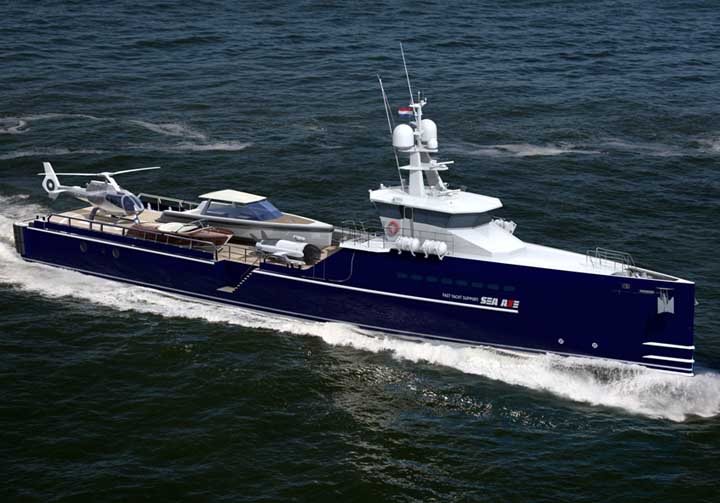
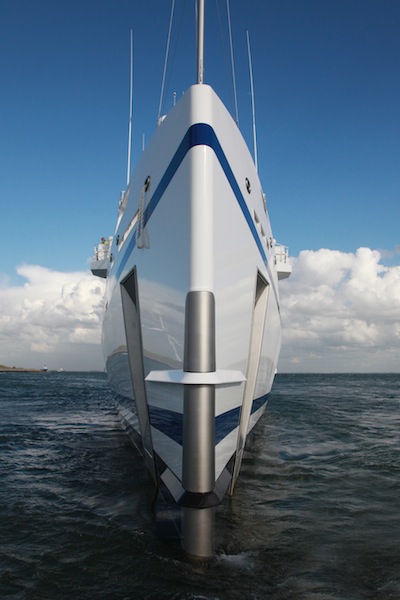
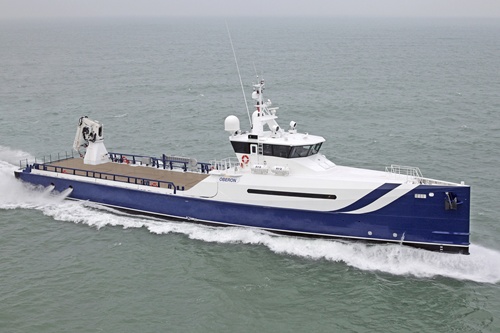
For details see this link:
http://www.amels-holland.com/uploads/tx_p3amels/The_Superyacht_Report__SEA_AXE_6711.pdf



For details see this link:
http://www.amels-holland.com/uploads/tx_p3amels/The_Superyacht_Report__SEA_AXE_6711.pdf
Last edited:
Nomad Willy
Guru
Art,
Depends on their stern mostly.
LRC58Fan,
I think those are Axe Bow boats. The stem is very deep and the bottom near the bow actually goes down instead of up. With the possible exception of propulsion I think the bottom of the stem is the lowest point of the boat.
Very narrow entry but they are not FD hulls .. at least not the ones I've seen. The trawler most like them is the Mainship 34 (older).
Depends on their stern mostly.
LRC58Fan,
I think those are Axe Bow boats. The stem is very deep and the bottom near the bow actually goes down instead of up. With the possible exception of propulsion I think the bottom of the stem is the lowest point of the boat.
Very narrow entry but they are not FD hulls .. at least not the ones I've seen. The trawler most like them is the Mainship 34 (older).
Last edited:
Yes - that is correct. Damen Sea Axe:
Sea Axe Design - Damen Shipyards Group

Since the eighties, Damen and Delft University of Technology have cooperated in a research programme aimed at improving the seakeeping characteristics of high-speed vessels. In the nineties, this cooperation produced the “Enlarged Ship Concept” on which the highly successful Stan Patrol 4207 and 4708 are based. In the beginning of the 21stcentury the “Axe Bow Concept” was developed, a hull shape with unparallelled seakeeping characteristics. Based on this concept, Damen has developed the “Sea Axe” Patrol Vessels and Fast Crew Suppliers.
Sea Axe Design - Damen Shipyards Group
Last edited:
hmason
Guru
- Joined
- Aug 9, 2013
- Messages
- 2,764
- Location
- USA
- Vessel Name
- Lucky Lucky
- Vessel Make
- Pacific Mariner 65
Saw this boat on the hook at Solomon's Island in Mill Creek. Looks nice on the outside.
2007 Chas Wittholtz PH factory rebuilt engine and updates Power Boat
2007 Chas Wittholtz PH factory rebuilt engine and updates Power Boat
Unfortunate no one ever converted one of these beauties. Probably fairly fuel efficient at just below hull speed.
I don't know how efficient they were. They were very heavy with really stout timbers and planking. In the later 1940s when most of them were built, fuel efficiency was not the big deal it's become today. They used the 6-71 because they were in ready supply as inexpensive surplus engines (albeit new) from the Navy, which had a huge presence in Hawaii at the time.
For their size, weight and relatively low power the aku boats were surprisingly fast, at least when empty. We were occasionally passed by one when we were out fishing miles off the north shore of Oahu or out in the Molokai Channel in my friend's 28' Uniflite sportfisherman. They would come slicing through the water at a pretty good clip. I assume part of the reason for this ability was their quite narrow beam for the length of the boat.
Since the boats were day boats there were minimal crew accommodations. There was a crude galley of sorts under the pilothouse and a few places where people could lie down.
The entire aft half of the boat was taken up with open holds, some for the live bait they netted in Pearl Harbor and the rest for the tuna that came aboard.
The elevated pilothouse served two visibility purposes. One was to see over the bow and the surrounding swells, the other was to make it easier to spot the seabirds that the fishermen used to find the fish. These were not gulls--- there are no seagulls in Hawaii, the soundtrack of the original Hawaii Five-0 notwithstanding-- but open-ocean seabirds such as terns, boobies, frigatebirds, tropicbirds, etc. They all had Hawaiian names, but the sportfishermen called them by the types of fish they tended to indicate. So there were "aku birds" and "mahi mahi birds," and so forth.
After three or more decades of service, these boats with their wooden holds smelled very strongly of fish, a smell I imagine could only have been eliminated by replacing the wood itself.
Last edited:
brian eiland
Guru
- Joined
- Jul 17, 2013
- Messages
- 930
- Location
- USA & Thailand
- Vessel Name
- RunningTide
- Vessel Make
- 37 Louisiane catamaran
Saw this boat on the hook at Solomon's Island in Mill Creek. Looks nice on the outside.
2007 Chas Wittholtz PH factory rebuilt engine and updates Power Boat
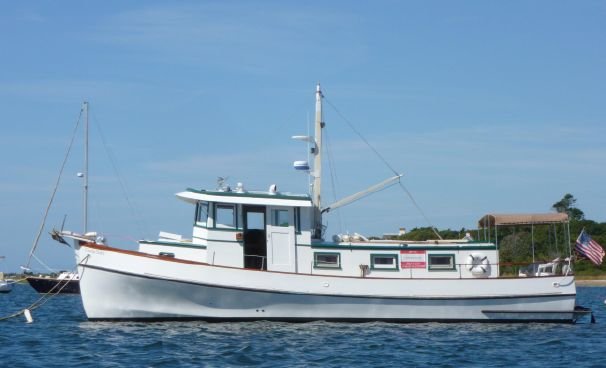
Add a saloon cabin behind that helm cabin and you sure would begin to look like a Pilgrim 40
Tad Roberts
Guru
Lots of Hawaiian Sampans built for sport fishing and cruising. The high-raking stem with lots of sheer seems to be a defining characteristic.....
This hull seems somewhat westernized but good construction pictures....
1990 Haole Sampan Power Boat For Sale - www.yachtworld.com
This hull seems somewhat westernized but good construction pictures....
1990 Haole Sampan Power Boat For Sale - www.yachtworld.com
BaltimoreLurker
Curmudgeon
- Joined
- Oct 8, 2007
- Messages
- 2,775
- Location
- USA
- Vessel Name
- Moon Dance
- Vessel Make
- 1974 34' Marine Trader Sedan
Here are some interesting new designs - I'm thinking this might be the shape of things to come:

For details see this link:
http://www.amels-holland.com/uploads/tx_p3amels/The_Superyacht_Report__SEA_AXE_6711.pdf
Not exactly graceful, but they sure do "look" fast!
Tad Roberts
Guru
Here are some interesting new designs - I'm thinking this might be the shape of things to come:

For details see this link:
http://www.amels-holland.com/uploads/tx_p3amels/The_Superyacht_Report__SEA_AXE_6711.pdf
As long as moorage remains one of the biggest factors in the size (length) of boats people choose to own, these proportions are not going to gain favor. I think reality points to fatter boats of lighter displacement, similar to the Greenline form.
If you scale a Damen sea axe to 65' long, the beam is 12'8". And because of the very fine bow the accommodations are the equivalent of a standard 40 footer.
Lots of Hawaiian Sampans built for sport fishing and cruising. The high-raking stem with lots of sheer seems to be a defining characteristic.....
This hull seems somewhat westernized but good construction pictures....
1990 Haole Sampan Power Boat For Sale - www.yachtworld.com
Big difference between the "haole sampans" and the true aku boats. The haole sampans are later boats and were built purely for sport fishing. While they had some superficial characteristics similar to the aku boats, they are in fact, very much different vessels. Having spent nearly three decades around and on both types of boats, the haole boats are not in the same league as the aku boats.
That's not to say that they were/are not very nice boats. Most of them were, although they tended to have a rather home-made look to them (because they were). But to those of us who lived there, the two types were apples and oranges. And there were some really, REALLY hideous haole sampans long with the nice ones.
What kind of sportfish boats have been made under the "haole sampan" designation since I left I have no idea. But in the heyday of the aku boats (1950-1980), the haole boats were toys.
Similar threads
- Replies
- 0
- Views
- 340
- Replies
- 15
- Views
- 1K

